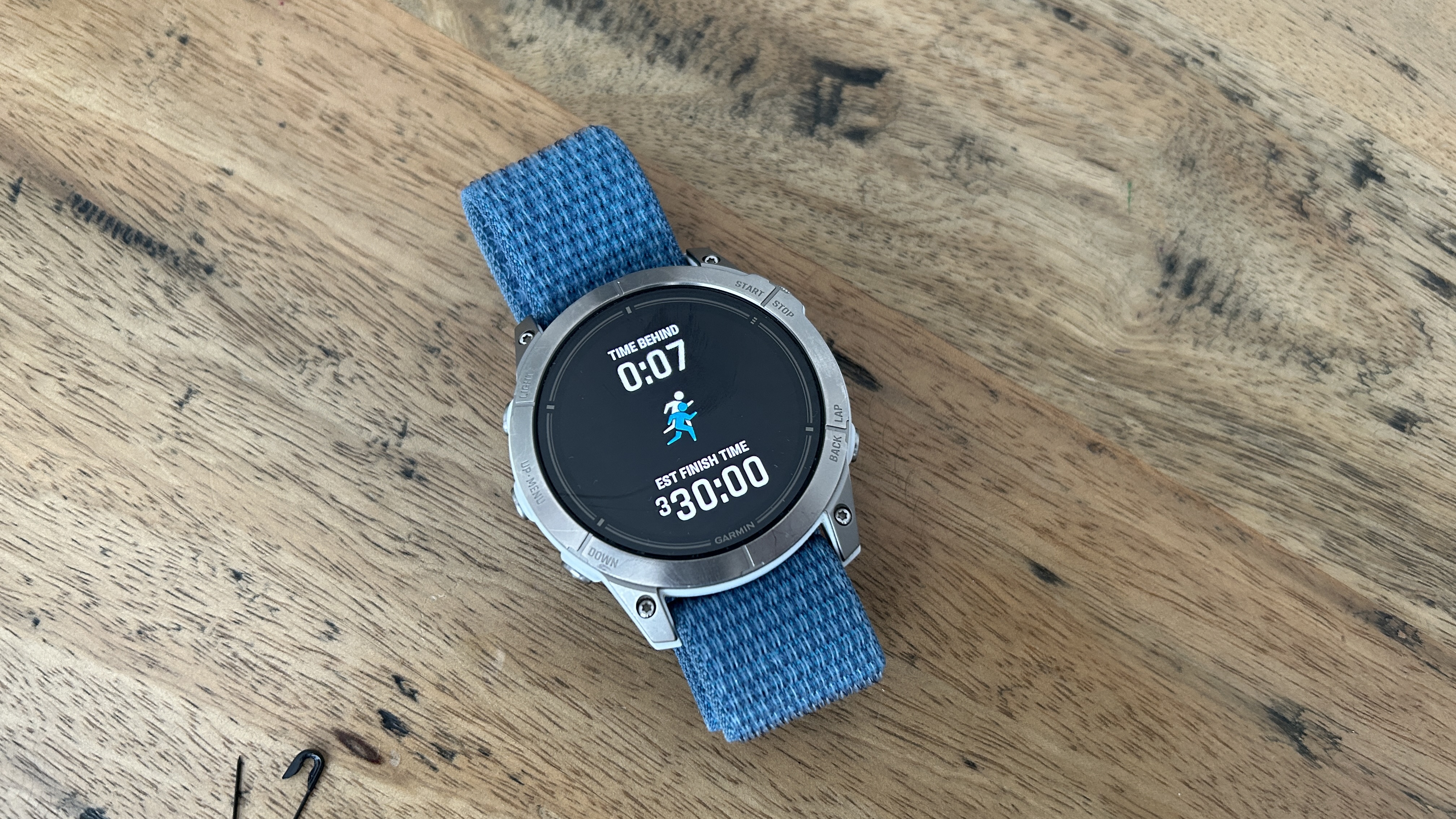I’ve Run The London Marathon Six Times—Here Are Four Ways To Set-Up Your Garmin Watch For A Better Race
I’ve run the London Marathon six times using a variety of different settings on my watch; here’s how to get the most from your Garmin in the race

The best running watches can do a lot more than track your workouts. Come race day your Garmin watch can help you stay on track and hit your target time, with a variety of features available to help you successfully pace a marathon.
I’ve run the London Marathon six times and used several different approaches when setting up my watch for the race, all of which were designed to keep me on track for my target time. That’s harder than in other marathons I’ve run because the GPS signal goes AWOL running through Canary Wharf and the tunnels on the course.
The simplest way to track your race is with your normal data screens, but I’d suggest adding lap pace to them, rather than current pace. Current pace is particularly susceptible to GPS trouble and will jump around a lot, while lap pace is your average pace for the current mile or kilometer split you’re running and is a more stable number to help you pace your run.
Even with lap pace the GPS problems you encounter in the second half of the London Marathon when running under high buildings and through tunnels can throw your watch off. I take manual splits when passing the mile/kilometer markers to get an accurate number for each to make sure I’m hitting my target pace.

A more advanced setting is to use the distance and time target setting on the watch. On your run page hold the menu button, select training, quick workout (or set a target depending on which model you’re using) and then distance and time. Select marathon distance and put in your target time and you’ll get two new data screens. One shows how far behind or ahead of your goal pace you are, and another gives a predicted finish time plus your average pace and distance remaining.
The predicted time is handy as long as you take into account the distance your watch has measured compared with the actual distance you have left to run, with GPS inaccuracies included. Check the distance on the watch against a marker when you pass it and add any discrepancy in time to the predicted time on the watch.
Another Garmin tool you can use is PacePro, which will give you a target time for each mile or kilometer of your race based on the elevation profile of the course, your overall goal and race strategy, as in whether you want to run even splits, or a negative split where you run the second half of the marathon faster than the first.
Sign up for workout ideas, training advice, reviews of the latest gear and more.
I’d advise against this though. PacePro is brilliant but will be rendered near useless by GPS inaccuracy and is most useful on hilly courses like the Boston Marathon where your pace per split will rise and fall with the hills. PacePro can help you stick to target pace in the first half of the London Marathon, which has good GPS accuracy with few tall buildings, but once you hit Canary Wharf inaccurate pace readings will throw it off.
The most complicated and most accurate option you can use is a ConnectIQ app that allows you to correct the distance readings on the watch. I have used one called Peter’s (Race) Pacer to do this (Peter’s (Hi-Viz) Pacer is a simpler app that does the same thing). When you pass a marker on the course, hit the lap button and it rounds the distance measured by the watch up or down to be exact.

So if your watch reads 5.12km at the 5K marker, hit the lap button and it will correct to 5.00km, and then adjust the average pace and other stats on the watch. You can also set a target time with Peter’s Race Pacer and it will tell you how far ahead or behind you are.
I’m hoping Garmin will eventually make this a native feature on its watches—as it is on the Wahoo ELEMNT Rival watch—because Peter’s (Race) Pacer isn’t the most attractive data screen, but it has worked well for me in the past when GPS readings have gone wonky. Just make sure you try the app out in a training run to get used to the info being shown.

Nick Harris-Fry is a journalist who has been covering health and fitness since 2015. Nick is an avid runner, covering 70-110km a week, which gives him ample opportunity to test a wide range of running shoes and running gear. He is also the chief tester for fitness trackers and running watches, treadmills and exercise bikes, and workout headphones.
